1. Introduction
LGBTQ stands for sexual minorities, including lesbian, gay, bisexual, transgendered and questioning individuals [1]. In recent years, as public acceptance of the LGBTQ community has increased, more and more films and TV shows have dared to feature representatives of the LGBTQ community as the protagonists of their programs. However, this can still present some problems. For most of the history of American cinema, films have not been able to feature openly gay characters, and LGBTQ people have largely been considered outside the "status quo" and made illegal. The 1930s Hays Code (the filmmaking code) prohibited the explicit portrayal of homosexuality in films for over 30 years [2]. This code was relaxed in the 1960s-1970s, which also signalled the dawn of the feminist and homosexual movements [3]. The Disney ensemble children's animated series The Owl House also featured lesbian characters. After the episode aired, creator Dana Terrace tweeted that she was eager to create cool kids as the main characters, but was blocked by Disney management. The project got greenlit when she was told by leadership that no gay or bisexual relationships of any kind would be allowed on the Disney Channel [4]. This situation has not only occurred on Disney Channel, but also on the Cartoon Network and Dreamworks Animation for Netflix platforms, where similar conflicts have arisen. For example, the 2013 children's animation Steven Universe was Cartoon Network's first series with a female creator. The juvenile animation received critical acclaim throughout the series and was praised for its positive portrayal of LGBT representation and relationships [5]. It has also managed to capture the attention of the industry as a whole, causing other platform producers to begin to intentionally focus on LGBTQ issues as well. She-Ra and the Princesses of Power produced and distributed by Dreamworks Animation for Netflix, has seen an increase in viewership, an outcry from fans and a positive response from the LGBTQ community. More production management on platforms is changing their mindset to allow animation on LGBTQ topics to be shown. Mainstream media are thus shifting their marketing strategies. On October 21, 2020, Pope Francis of the Vatican stated in a documentary about him that gay people have the right to find a family and suggested civil legal guarantees for gay marriage. This statement garnered widespread attention and was a landmark in religious history [6]. This incident speaks volumes about how the LGBTQ community around the world is continuing to push the boundaries of the sexual minority affirmative action movement, and this is reflected in film and television productions.
Although films and television are now willing to show the LGBTQ community to the general public, they often have strong stereotypes. For example, gay characters are often portrayed as dangerous, violent, predatory or prone to suicide. Over time, Hollywood improved its portrayal of gay and lesbian characters with films such as Brokeback Mountain. They almost always began to focus on "issue films" about the challenges faced by LGBTQ people. It is only in recent years that more representations of sexual orientation and gender identity have become more prevalent in film, and we can see a significant number of films and television productions that show sexual minorities [1]. On this topic, films and television shows have been produced in numerous nations, however the expressions used vary from nation to nation and the East and West use quite different styles of expression. China serves as a representative of Eastern nations: the LGBTQ community has been marginalised and absent from mainstream big-screen media in mainland China, and the few depictions of sexual minorities that do appear are typically stereotyped and are typically played by supporting actors in comedic roles, such as "Sissies" or "Femme Fatales." Most films and plays on the subject are also censored or banned by censors. Many believe that China's conservative views are the reason why big movies still lack LGBTQ representation, as this can get movies banned in China [7]. Even with the gradual acceptance of the LGBTQ community in film and television in Europe and the United States, the survival environment and status of LGBTQ people in mainland China remains less than ideal, and stigmatization and discrimination against the minority group still exist. In general, mainland China is still sensitive to this topic, and most of the films in this genre appear in an underground posture that deviates from the mainstream. Western countries, represented by the United States, have seen record-breaking growth in the share of LGBTQ characters in American television. According to the Gay & Lesbian Alliance for Defamation's (GLAAD) "Where We Are on TV" study for the last five years from 2018 to 2022, the authors found that the percentage of LGBTQ characters has been on the rise in all five years except for 2020 when the percentage of LGBTQ characters declined slightly. This decline is due to the emergence of COVID-19, which has affected the production of several shows [8-11]. As mentioned earlier, the growth of LGBTQ characters from the initial inability to feature in films. As was previously established, for the most of American film history, gay characters were first prohibited from appearing in films. These five years' worth of data indicate that LGBTQ triumphs in American drama are not just about numbers but also about screen presence. It was impossible to predict 30 years ago the level of lGBTQ screen presence that exists now. The reason for this is tied to the political environment: "As anti-LGBTQ policies are being discussed more and more passionately at home and abroad, there is a more urgent need for stories and characters on television to shape understanding and acceptance of LGBTQ people than ever before."
Generally speaking, stereotypes are usually the first concern when people discuss media representations of various groups, especially those marginalized by the general public. In order to analyse LGBTQ-related film and television works and to comprehend LGBTQ-related expressions in film and television works, the author uses audiovisual analysis, symbolic analysis, and textual analysis, which are methods that are frequently used in film and television research. The author does this in the hopes that the LGBTQ community will appear more frequently and take a place in film and television works.
2. Farewell My Concubine
Farewell My Concubine follows the path to the stardom of two Peking Opera actors, Duan Xiaolou and Cheng Dieyi, in the context of China's transition to a modern nation-state in the 20th century. The film is a microcosm of a great historical and social tragedy that gives deeper meaning to history, politics, humanity, and society. The film connects the relationship between Duan Xiaolou, Cheng Dieyi, and Juxian to important political events in modern Chinese history [12]. Farewell My Concubine has intricate origins, including in Chinese history, drama, and literature [13]. The film text creates a narrative ending that reinforces nationalist ideology at the expense of female and cool child representation [12]. Throughout the film, homosexuality is implicitly mentioned. While the film is open to gender issues, it also arranges a most secular and reasonable explanation in the storyline. The whole film is a process of Cheng Dieyi's gender transition and identity, a convenient way for the audience to understand the underclass society and the fate of children at that time. The director takes Cheng Dieyi's tragic life as the centerpiece and denounces the oppression of women, children and other disadvantaged groups by the patriarchal society. The whole film shows the audience perfect photography through perfect artistic scenery and light and shadow scheduling, which also shows the director's artistic mastery. The author chose this film for analysis because, among other things, it is a Chinese film that has achieved a high level of artistic achievement and international recognition. The film was nominated for the Palme d'Or at the 46th Cannes Film Festival and for Best Foreign Language Film at the 66th Academy Awards, and it was selected as one of the "100 Best Films of All Time" by Time Magazine [14]. Chen's film achieved such artistic success because his cross-regional creation blends aesthetics, historical scope, and real emotion to create a rare epic that does not sacrifice its artistic integrity for commercial success [13]. This film gives us a certain view and attitude towards gay men in China (an Eastern country). The second reason is that the film is considered a classic cool movie. Battlestar Galactica is a classic cool kid movie not because it portrays the reality or positive images of queer and trans life today. Rather, the film shows us a strange way of being that we can barely recognize. It may even offend our modern sensibilities, but he deserves to be remembered and understood in all his human complexity [15].
This section focuses on analyzing the film through the method of visual analysis. The author will conduct a visual analysis through color and composition in the film. In filmmaking, color is used to set the tone of a particular scene [16]. In terms of hue, the three different shades of black, red and blue are used throughout the film and set the emotional tone of the film. Color as an important expression of film art, color expression is very inclusive and symbolic. Color can often be through the layout of space, visual rendering, and picture management so that the audience feels the content beyond the plot.
The first is the use of black and white gray tones in the film, which sets a depressing aesthetic tone for the film and paves the way for the emotional development of the plot. This tone mainly appears in the opening three minutes of the film, giving people a gray, depressed feeling, but also creating an ancient, distant and full of real atmosphere. This tone in the opening scene of the film will grip the audience's heart, giving people a sense of rustic heaviness. The director's use of this tone gives the film a sense of formal beauty, not only reminiscent of the period but also suggesting the tragic tone of Cheng Dieyi's life.
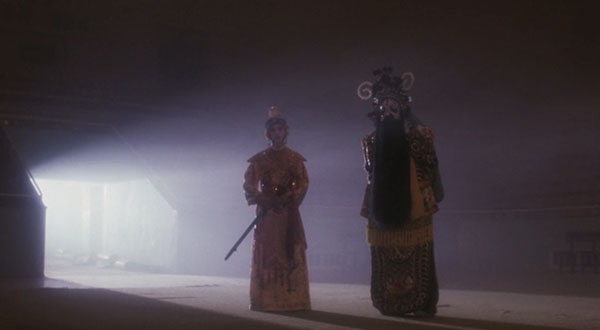
Figure 1: Screenshot of Farewell My Concubine-“light and dark”(Source: https://www.youku.com/?spm=a2h0c.8166622.header-logo-wrap.A).
Figure 1, it is a full shot. People can see through the picture that this is an extended line composition with a strong contrast between light and dark. The lines of light sources converging on the left side of the picture give a strong sense of perspective and three-dimensionality, and the audience can see the main character, the subject of the picture, through the leading lines of light sources.
The second is the use of red, red belongs to the warm tone, and this warm tone of the opposite use increases the film characters' helplessness and despair. From the perspective of color science, red is a symbol of passion and romance, representing warmth. In traditional Chinese culture, red is the color of passion, warmth, enthusiasm, and celebration. In portraying the role of Juxian, the female protagonist, the director uses a lot of red shots.
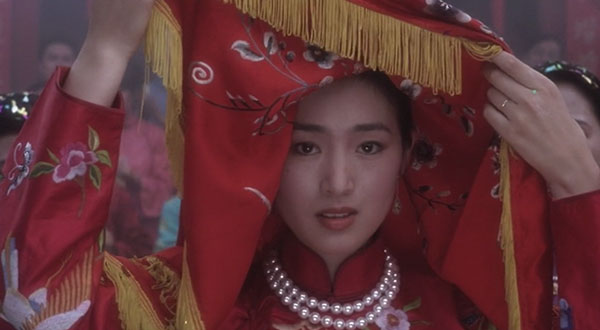
Figure 2: Screenshot of Farewell My Concubine-“red color”(Source: https://www.youku.com/?spm=a2h0c.8166622.header-logo-wrap.A).
Juxian's entrance is amidst an overwhelmingly large red set. As Figure 2, when Juxian finally leaves the brothel to marry Duan Xiaolou, she wears a red wedding dress and a red wedding handkerchief. Duan Xiaolou gives her the love she craves and the red wedding dress that represents the blessing of a traditional Chinese woman when she marries, and her face is full of relief for the past and a bright vision for the future.
Finally, there is the blue color in the film. The blue color adds to the film's bleak and desolate tone.
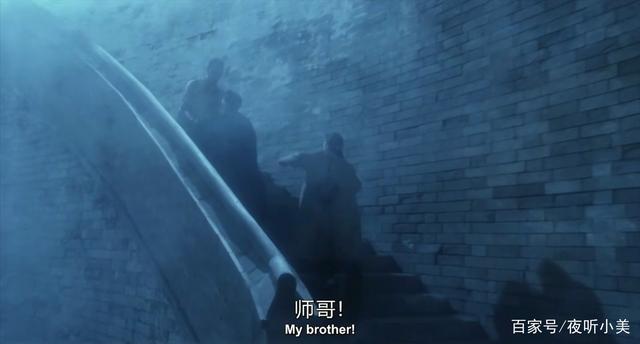
Figure 3: Screenshot of Farewell My Concubine-“blue color”(Source: https://www.youku.com/?spm=a2h0c.8166622.header-logo-wrap.A).
Blue is the color of sadness and melancholy, contrasting with red. In the film, Cheng Dieyi sings for the Japanese to save Duan Xiaolou, who has offended them, and when he leaves the gendarmerie he meets Duan Xiaolou, who has been released. Instead of being grateful for Cheng Dieyi's dedication, Duan Xiaolou speaks ill of him because he sings for the Japanese. This makes Cheng Dieyi's mood fall from the excitement of Duan Xiaolou's rescue to the bottom. In this shot as Figure 3, we can see the high city wall and Cheng Dieyi's despondent figure. The director rendered this sad and depressing atmosphere while also reflecting the character's inner sadness.
In general, the use of color and light is the feature of the film, and the three shades of black, red and blue throughout the film set the emotional tone. In terms of the emotions conveyed by color, the director's use of different colored sets effectively combines color with the ups and downs of the main character's fate. In terms of color symbolism, the cross-use of the three hues renders the background environment of the whole era and also embodies the emotional ideals and passion of life of the main character in the film in the symbolism and expression of color. Color has a profound meaning and influence on the film. First, color can make the audience resonate with the main character emotionally. Second, the use of color can highlight the character traits of the characters. Third, color can convey the emotional bond between characters. Color is one of the elements that show the soul of the film. This part is cut through the color and composition of the film, and the role played by color and composition in the film is analyzed in depth through visual analysis.
3. Portrait of a Lady on Fire
Portrait of a Lady on Fire is a drama film directed by Celine Sianma and starring Noomi Merante and Adela Harnell. It is a film about cool kids in love, and women staring [17]. The film, which premiered at the Cannes Film Festival on May 19, 2019, tells the story of a relationship that develops in the 18th century France between Lois, a bride who thinks she is reluctant, and Marie, a female artist who commissions her portrait. The director's portrayal of lesbian emotions through the eyes of a woman makes this film a delicate and touching one. The film won the Best Screenplay Award at the 72nd Cannes Film Festival and the Best Cinematography Award at the César of French Cinema, known as the "French Oscars. The reason the author chose this film as a representative is that it is a very famous and well-received LGBTQ film about the relationship between two women, which represents the L (lesbian) in LGBTQ. Secondly, the film is a French film that represents to some extent the attitudes and approaches of Western countries in presenting the LGBTQ community in film. In this section the author will make a detailed discourse analysis through light and shadow, costumes, using color scheme, and composition as a short visual analysis.
The whole movie presents a kind of oil painting texture, giving the audience a new visual experience and emotional impact. As the movie says, while you are looking at me, I am also looking at you. Most of the whole movie uses natural light and candlelight to give people a sense of immersion and warmth. For example, the fire in the fireplace sways and the dry wood makes a crackling sound of burning.
There are many metaphors in the film that are shown through the characters' costume changes. In the first half of the film, the lady wears dark clothes and a hat, which to some extent reflects her inner timidity and introversion. When she starts to have emotional entanglements, the color of her clothes changes from dark to bright green and white. The change in color of the clothes implies a change of the main character's emotions.
The movie tells a Greek mythological story: the love tragedy of Orpheus and Eurydice. After the death of Eurydice by a poisonous snake, Orpheus was so distraught that he went to the underworld to ask for his wife to be brought back to life. Impressed by his sincere plea and beautiful song, the queen of the underworld returned Eurydice's soul to her. There was only one commandment that could not be broken: he must not look back at his wife before leaving the underworld, otherwise, he would lose her forever. Sadly, Orpheus finally looked back, and he lost his wife forever. After hearing this story, the three people in the film had different interpretations, but Eloise speculated that it was Eurydice's "turn around" that turned the focus of attention to Eurydice and listened to her voice and thoughts for the first time. In interpretations of the myth of Orpheus and Eurydice, the focus has often been on Orpheus' active choice, but the perspective of Eurydice has been overlooked. Her vision boldly points out that the "return of Orpheus" is actually a choice made by both Orpheus and Eurydice, rather than unilateral wishful thinking. This is a reflection of the concept of love advocated throughout "Portrait of a Lady on fire": to maintain a reciprocal relationship in love and to pursue equal giving and asking. In the film, you can often see a very careful symmetrical composition, always emphasizing the equal love relationship between the two parties.
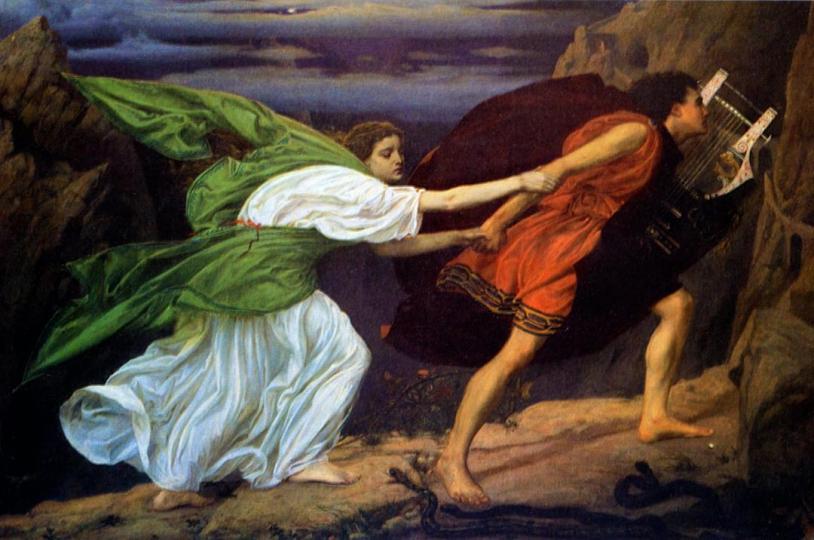
Figure 4: Orpheus and Eurydice (Source: The Editors of GreekMythology.com, 2018).
In the movie, the painter often wears red clothes, and the lady often wears bright green dresses when painting portraits. The stark contrast between red and green gives the audience a strong visual impact. This color contrast not only highlights the visual effect but also links the movie characters with mythology. The classic painting below, with the theme of "Fus and Eurydice", was created in 1862 and shows the same scene of Orpheus and Eurydice marching to earth in the underworld as Figure 4, with the colors of their clothes exactly red and green.
At the end of the film, Marianne's paintings exhibited in her father's name are also themed on this myth, but in her paintings, Orpheus' clothes turn blue, while Eurydice, who is about to fall into the abyss, wears a pure white gown. Comparing the characters' costumes, Marianne is wearing a precious blue blouse at this time, and it was Eloise who wore a white wedding veil to say her final goodbye as Figure 5. These color schemes add layers of meaning throughout the narrative; the red dress is a symbol of defiance, of a woman who does not need to marry because she is about to take over her father's business, and Héloïse's dress changes from dark blue to green to symbolize her growth from a melancholy state of mind [17].
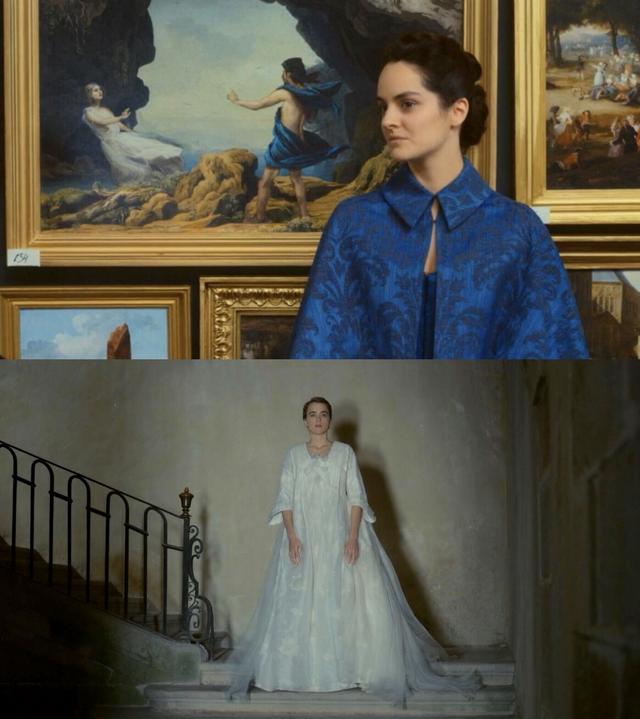
Figure 5: Screenshot of Portrait of a Lady on Fire (Source:https://v.youku.com/v_show/id_XNDYzMDkxNjA2MA==.html?spm=a2h0c.8166622.PhoneSokuUgc_1.dtitle).
Surprisingly, there are almost no men in the film. Sciamma, who has directed five films in France since 2008, calls Portrait of a Lady on Fire "a manifesto for the female gaze," and every moment of her films subverts the male perspective in favor of the female gaze [18]. In the film, men seem to be a kind of marginalized role, and although we can't see them, their influence is everywhere and can shape the fate of women at all times. The Milanese gentleman the lady is to marry, the painter's slightly reputable father, and the man who impregnates the maid. They are never present, but they keep their fates in check and control the plot.
In this section, the author provides a detailed discourse analysis through light and shadow, costumes, using a color scheme, and composition as a short visual analysis. The director cleverly uses costume colors to connect the film characters and mythology, using the screen as a canvas to paint a picture of exquisite beauty that is enough to make people fall into the whirlpool of love. While interpreting the repressed feelings of the isolated island lovers, the director also conveys to the audience a deeper reflection on women's body consciousness. The film is not only an LGBTQ lesbian love story but also an exploration of feminism, blending painting, philosophy and other art forms to submerge women's self-awareness into the film.
4. Call Me By Your Name
Call Me By Your Name tells the story of Elio, a seventeen-year-old who develops a relationship with his dad's assistant Oliver while on summer vacation with his family. The film is a transgression of gender, ethnicity and nationality. The two teenagers are of the same Jewish descent but of different nationalities. For a brief period of six weeks, they are able to share a room together, but the relationship is doomed to end due to the different religious beliefs of the two families, with Oliver's family's Christianity opposing gay love. Although this is still a film about a relationship between gay men, unlike many same-sex films, this film does not try to conform to the values of heterosexual norms like other films in the genre [19]. This is because Guadagnino is striving to make a film that reflects love in a way that is absolutely timeless and inclusive of all people, regardless of sexual orientation [20]. The authors argue that the film has a broader film audience and that it is not limited to the LGBTQ community. The film can be seen as a work that has about first love, so it may have a broader audience, and the above two points are the reasons why the authors chose the film for analysis. In this section, the author will using audio analysis and sign analysis to analyze this film.
The movie uses a lot of country shots and soothing and relaxing background music, which sets a romantic and comfortable emotional tone. Film images are usually bright and colorful, interpreting the vibrancy of summer. In this kind of environment, the sprouting of emotions is natural. For the music, Elio in the movie will be happy because the guitar is praised by Oliver, and will also argue because of the difference in piano style. The movie interlude Visuals of Gideon is ethereal and dreamy, which can both set off the beauty of the countryside and reflect Elio's mood at the end.
The episode in which Elio eats a peach appears in the movie. The authors argue that this can be seen as a symbol. One of the best-known Chinese sources of the Cooler symbol is the bitten peach [21]. In Chinese mythology, the peach is a symbol of longevity and immortality. One fable tells of an emperor who fell in love with a male prostitute and kept their affair a secret. One day, the male prostitute picked a particularly sweet peach, which he bit into and gave the rest to the emperor. The emperor is charmed by this gesture and openly expresses his love for him. after Elio takes a bite of the peach, Oliver is about to eat it, but is prevented from doing so. It is implied that their feelings will be stopped as well.

Figure 6: Screen shot of Call Me by Your Name (Source: https://www.youtube.com/watch?v=ZOoMGAL9rCQ).
Figure 6 is also a scene from the movie. This is a broken arm fished out of the water, Elio reached out his hand to Oliver, and Oliver shook hands with him with the broken arm, this scene and the end of the girl and Oliver shaking hands create a contrast. The two contrasts reveal what is crippled and what is eternal. Same-sex love is a crippling beauty, but it is not the whole of love and eternal, even if the relationship is heartfelt, losing it will become a pain like a broken arm.
In addition, the imagery of water is often found in movies. Movies often show swimming, boys and girls playing in the water and kissing. The author believes that this is also a symbol, that water is the driving force of all life, the source of human instincts and passions, and the creator of nature and beauty. Even the archaeological bronze statues have to be salvaged from the water, which is trying to show that water and love, hormones are inseparable. Water gives life to human beings, and also gives them their instincts and nature.
Overall speaking, the film portrays Elio and Oliver's love in a way that has been praised by members of the LGBT community, placing sexuality at the forefront of issues that any love relationship would encounter. Their relationship transcends the boundaries of same-sex relationships and encourages a broader acceptance of the love of all kinds [20]. The film has also won 87 awards for its work, including an Academy Award for Best Adapted Screenplay [19].
5. Comparison of LGBTQ Representations in Eastern and Western Film and Television Productions
Farewell My Concubine is a gay male film made by a Chinese director in which homosexuality is implicitly mentioned. Despite the film's critical acclaim, however, it was not well received by the Chinese government. The Chinese government pulled the film from the public after its release and censored and modified it because the government objected to the representation of homosexuality in the film. The film was later allowed to be shown to the public in September 1993. He mentioned that homosexuality was a criminal offence in China until the end of the 20th century. Not only that, homosexual desires and tendencies also required psychiatric treatment. It was not until 1997 that the law was repealed and homosexuality was legalized. As a result, Chinese films are usually implicit in their representation of the LGBTQ community [22].
In contrast, LGBTQ characters in Western films are shown in a more daring manner, with some intimate actions, which is quite different from such films in China. However, films with diverse expressions such as "Portrait of a Burning Woman" and the famous LGBTQ film "Call Me by Your Name" mentioned in the above examples are from the independent sector. The LGBTQ community is still underrepresented in Hollywood and questions about diversity and representation remain [23]. Therefore the author writes this article with the hope that in the near future, Hollywood, Disney, and other companies will include the LGBTQ community in their films and as major characters in their films. It is understandable that studios are afraid to produce LGBTQ-related films and TV shows for fear of censorship, but the author hope these companies know that there are different aspects of society and different people. Breaking down gender norms and stereotypes gives LGBTQ people a certain foothold in society. Hollywood as a prominent film production company can not only help individuals find personal identity, but also promote tolerance and acceptance of all kinds of sexuality [23]. Once these studios do this, the author believe it will reduce a lot of the prejudice and stereotypes from the general public towards this group.
6. Conclusion
Through the research, this paper finds that although more and more Asian countries are becoming more open to LGBTQ attitudes, more and more film and television productions are emerging. However, compared to Western countries, due to the differences in culture and social environment, Asian LGBTQ film and television productions still focus on sexual minorities' search for identity, resistance to social prejudice, and struggle for the road to affirmative action. This will be a major theme of LGBTQ works in the region for some time to come. The genre is relatively homogeneous and could be diversified in the future. The East and the West exhibit this group of individuals in quite different ways in terms of expression. In Western countries, such films are basically produced by independent film companies. Hollywood still does not seem to be involved in such films due to censorship, culture, religion, etc. The main contribution of this paper is to identify the lack of representation and diversity of the LGBTQ community in film and television through research. This may inspire some film production companies and give the LGBTQ community more opportunities to be represented on screen as a medium in the near future and to break stereotypes. Although the current study has drawn conclusions, there are still some shortcomings: the author draws conclusions from only a limited number of films and television productions, and perhaps the conclusions are incomplete. In future research the author will draw more complete conclusions through more films of this genre.
References
[1]. Lesbian, Gay, Bisexual, Transgendered and Questioning (LGBTQ) Individuals. (n.d.). Connecticut Clearing House. Retrieved October 22, 2022, from https://www.ctclearinghouse.org/topics/lesbian-gay-bisexual-transgendered-and-questioning-lgbtq-individuals/
[2]. Grimshaw, I. (2021, June 3). A short history of LGBTQ+ cinema. Freesat. Retrieved October 6, 2022, from https://www.freesat.co.uk/news/films/history-of-lgbtq-film
[3]. 2SLGBTQ+ Representation in Film and Television. (2022, September 28). MediaSmarts. Retrieved September 29, 2022, from https://mediasmarts.ca/digital-media-literacy/media-issues/diversity-media/2slgbtq-representation/2slgbtq-representation-film-television
[4]. Wit, A. D. D. (2020, August 15). Disney Executive Tried To Block Queer Characters In ‘The Owl House,’ Says Creator. Cartoon Brew. Retrieved October 4, 2022, from https://www.cartoonbrew.com/disney/disney-executives-tried-to-block-queer-characters-in-the-owl-house-says-creator-195413.html
[5]. Tuchow, R. (2019, September 23). The universe of Rebecca Sugar. Retrieved October 6, 2022, from https://kidscreen.com/2019/09/23/the-universe-of-rebecca-sugar/
[6]. Thoreson, R. (2020, October 28). Pope Francis Supports Same-Sex Civil Unions. Human Rights Watch. Retrieved October 6, 2022, from https://www.hrw.org/news/2020/10/21/pope-francis-supports-same-sex-civil-unions
[7]. Mason, J. (2020, September 9). Disney’s “Mulan” Remake Feels at War With Itself. The Mary Sue. Retrieved October 12, 2022, from https://www.themarysue.com/mulan-review/
[8]. Where We Are on TV Report - 2018. (2019, October 25). GLAAD. Retrieved September 29, 2022, from https://www.glaad.org/whereweareontv18
[9]. Where We Are on TV Report - 2019. (2021, January 14). GLAAD. Retrieved September 29, 2022, from https://www.glaad.org/whereweareontv19
[10]. Where We Are on TV Report - 2020. (2021, January 14). GLAAD. Retrieved September 29, 2022, from https://www.glaad.org/whereweareontv20
[11]. Where We Are on TV Report - 2021-22. (2022, April 18). GLAAD. Retrieved September 29, 2022, from https://www.glaad.org/whereweareontv21
[12]. Hsu, J. H. (2012, March). Queering Chineseness: The Queer Sphere of Feelings in Farewell My Concubineand Green Snake. Asian Studies Review, 36(1), 1–17. https://doi.org/10.1080/10357823.2011.651199
[13]. Eggert, B. (2022, April 24). Farewell My Concubine. Deep Focus Review. Retrieved October 11, 2022, from https://deepfocusreview.com/definitives/farewell-my-concubine/
[14]. Kumar, A., Nanda, V., & Newman, C. (2016, November 15). Farewell My Concubine. The Censorship Files. Retrieved October 8, 2022, from https://thecensorshipfiles.wordpress.com/farewell-my-concubine/
[15]. Aurand, B. B. (2014, September 3). Farewell My Concubine: A Queer Film Classic. Foreign Influence. Retrieved October 8, 2022, from https://foreigninfluence.com/2014/09/03/farewell-my-concubine-a-queer-film-classic/
[16]. DigitalSynopsis.com. (2021, January 8). How Filmmakers Use Colors To Set The Mood Of A Film. Digital Synopsis. Retrieved October 11, 2022, from https://digitalsynopsis.com/design/film-movies-color-psychology/
[17]. Sun, V. X. (2021, April 6). ‘Portrait of a Lady on Fire’ and Céline Sciamma’s Mastery of Color and Light. The Best Picture Project. Retrieved October 19, 2022, from https://sites.la.utexas.edu/bpp/2021/04/06/portrait-of-a-lady-on-fire-and-celine-sciammas-mastery-of-color-and-light/
[18]. Syme, R. (2020, March 4). “Portrait of a Lady on Fire” Is More Than a “Manifesto on the Female Gaze.” The New Yorker. Retrieved October 19, 2022, from https://www.newyorker.com/culture/cultural-comment/portrait-of-a-lady-on-fire-is-more-than-a-manifesto-on-the-female-gaze
[19]. Zak, G. (2019, June 4). More Than a Pretty Picture: Call Me by Your Name’s Subversion of Hollywood’s Heteronormative Portrayal of Homosexuality. Comparative Media Studies| Writing. https://cmsw.mit.edu/more-than-a-pretty-picture-call-me-by-your-names-subversion-of-hollywoods-heteronormative-portrayal-of-homosexuality/
[20]. Brock, I. (2018, February 5). “Call Me By Your Name” and LGBTQ+ representation. The DePaulia. https://depauliaonline.com/32178/artslife/call-me-by-your-name-and-lgbtq-representation/
[21]. The Bitten Peach and the Cut Sleeve. (2016, December 20). Making Queer History. https://www.makingqueerhistory.com/articles/2016/12/20/the-bitten-peach-and-the-cut-sleeve
[22]. Kumar, A., Nanda, V., & Newman, C. (2016, November 15). Farewell My Concubine. The Censorship Files. Retrieved October 8, 2022, from https://thecensorshipfiles.wordpress.com/farewell-my-concubine/
[23]. Sur, D. (2021, June 4). How to increase LGBTQ+ representation in Hollywood. Far Out Magazine. Retrieved October 20, 2022, from https://faroutmagazine.co.uk/hollywood-increase-lgbtq-representation-in-cinema/
Cite this article
Luo,Q. (2023). The Research on the Representation of LGBTQ in Eastern and Western Films. Communications in Humanities Research,3,893-903.
Data availability
The datasets used and/or analyzed during the current study will be available from the authors upon reasonable request.
Disclaimer/Publisher's Note
The statements, opinions and data contained in all publications are solely those of the individual author(s) and contributor(s) and not of EWA Publishing and/or the editor(s). EWA Publishing and/or the editor(s) disclaim responsibility for any injury to people or property resulting from any ideas, methods, instructions or products referred to in the content.
About volume
Volume title: Proceedings of the International Conference on Interdisciplinary Humanities and Communication Studies (ICIHCS 2022), Part 1
© 2024 by the author(s). Licensee EWA Publishing, Oxford, UK. This article is an open access article distributed under the terms and
conditions of the Creative Commons Attribution (CC BY) license. Authors who
publish this series agree to the following terms:
1. Authors retain copyright and grant the series right of first publication with the work simultaneously licensed under a Creative Commons
Attribution License that allows others to share the work with an acknowledgment of the work's authorship and initial publication in this
series.
2. Authors are able to enter into separate, additional contractual arrangements for the non-exclusive distribution of the series's published
version of the work (e.g., post it to an institutional repository or publish it in a book), with an acknowledgment of its initial
publication in this series.
3. Authors are permitted and encouraged to post their work online (e.g., in institutional repositories or on their website) prior to and
during the submission process, as it can lead to productive exchanges, as well as earlier and greater citation of published work (See
Open access policy for details).
References
[1]. Lesbian, Gay, Bisexual, Transgendered and Questioning (LGBTQ) Individuals. (n.d.). Connecticut Clearing House. Retrieved October 22, 2022, from https://www.ctclearinghouse.org/topics/lesbian-gay-bisexual-transgendered-and-questioning-lgbtq-individuals/
[2]. Grimshaw, I. (2021, June 3). A short history of LGBTQ+ cinema. Freesat. Retrieved October 6, 2022, from https://www.freesat.co.uk/news/films/history-of-lgbtq-film
[3]. 2SLGBTQ+ Representation in Film and Television. (2022, September 28). MediaSmarts. Retrieved September 29, 2022, from https://mediasmarts.ca/digital-media-literacy/media-issues/diversity-media/2slgbtq-representation/2slgbtq-representation-film-television
[4]. Wit, A. D. D. (2020, August 15). Disney Executive Tried To Block Queer Characters In ‘The Owl House,’ Says Creator. Cartoon Brew. Retrieved October 4, 2022, from https://www.cartoonbrew.com/disney/disney-executives-tried-to-block-queer-characters-in-the-owl-house-says-creator-195413.html
[5]. Tuchow, R. (2019, September 23). The universe of Rebecca Sugar. Retrieved October 6, 2022, from https://kidscreen.com/2019/09/23/the-universe-of-rebecca-sugar/
[6]. Thoreson, R. (2020, October 28). Pope Francis Supports Same-Sex Civil Unions. Human Rights Watch. Retrieved October 6, 2022, from https://www.hrw.org/news/2020/10/21/pope-francis-supports-same-sex-civil-unions
[7]. Mason, J. (2020, September 9). Disney’s “Mulan” Remake Feels at War With Itself. The Mary Sue. Retrieved October 12, 2022, from https://www.themarysue.com/mulan-review/
[8]. Where We Are on TV Report - 2018. (2019, October 25). GLAAD. Retrieved September 29, 2022, from https://www.glaad.org/whereweareontv18
[9]. Where We Are on TV Report - 2019. (2021, January 14). GLAAD. Retrieved September 29, 2022, from https://www.glaad.org/whereweareontv19
[10]. Where We Are on TV Report - 2020. (2021, January 14). GLAAD. Retrieved September 29, 2022, from https://www.glaad.org/whereweareontv20
[11]. Where We Are on TV Report - 2021-22. (2022, April 18). GLAAD. Retrieved September 29, 2022, from https://www.glaad.org/whereweareontv21
[12]. Hsu, J. H. (2012, March). Queering Chineseness: The Queer Sphere of Feelings in Farewell My Concubineand Green Snake. Asian Studies Review, 36(1), 1–17. https://doi.org/10.1080/10357823.2011.651199
[13]. Eggert, B. (2022, April 24). Farewell My Concubine. Deep Focus Review. Retrieved October 11, 2022, from https://deepfocusreview.com/definitives/farewell-my-concubine/
[14]. Kumar, A., Nanda, V., & Newman, C. (2016, November 15). Farewell My Concubine. The Censorship Files. Retrieved October 8, 2022, from https://thecensorshipfiles.wordpress.com/farewell-my-concubine/
[15]. Aurand, B. B. (2014, September 3). Farewell My Concubine: A Queer Film Classic. Foreign Influence. Retrieved October 8, 2022, from https://foreigninfluence.com/2014/09/03/farewell-my-concubine-a-queer-film-classic/
[16]. DigitalSynopsis.com. (2021, January 8). How Filmmakers Use Colors To Set The Mood Of A Film. Digital Synopsis. Retrieved October 11, 2022, from https://digitalsynopsis.com/design/film-movies-color-psychology/
[17]. Sun, V. X. (2021, April 6). ‘Portrait of a Lady on Fire’ and Céline Sciamma’s Mastery of Color and Light. The Best Picture Project. Retrieved October 19, 2022, from https://sites.la.utexas.edu/bpp/2021/04/06/portrait-of-a-lady-on-fire-and-celine-sciammas-mastery-of-color-and-light/
[18]. Syme, R. (2020, March 4). “Portrait of a Lady on Fire” Is More Than a “Manifesto on the Female Gaze.” The New Yorker. Retrieved October 19, 2022, from https://www.newyorker.com/culture/cultural-comment/portrait-of-a-lady-on-fire-is-more-than-a-manifesto-on-the-female-gaze
[19]. Zak, G. (2019, June 4). More Than a Pretty Picture: Call Me by Your Name’s Subversion of Hollywood’s Heteronormative Portrayal of Homosexuality. Comparative Media Studies| Writing. https://cmsw.mit.edu/more-than-a-pretty-picture-call-me-by-your-names-subversion-of-hollywoods-heteronormative-portrayal-of-homosexuality/
[20]. Brock, I. (2018, February 5). “Call Me By Your Name” and LGBTQ+ representation. The DePaulia. https://depauliaonline.com/32178/artslife/call-me-by-your-name-and-lgbtq-representation/
[21]. The Bitten Peach and the Cut Sleeve. (2016, December 20). Making Queer History. https://www.makingqueerhistory.com/articles/2016/12/20/the-bitten-peach-and-the-cut-sleeve
[22]. Kumar, A., Nanda, V., & Newman, C. (2016, November 15). Farewell My Concubine. The Censorship Files. Retrieved October 8, 2022, from https://thecensorshipfiles.wordpress.com/farewell-my-concubine/
[23]. Sur, D. (2021, June 4). How to increase LGBTQ+ representation in Hollywood. Far Out Magazine. Retrieved October 20, 2022, from https://faroutmagazine.co.uk/hollywood-increase-lgbtq-representation-in-cinema/









